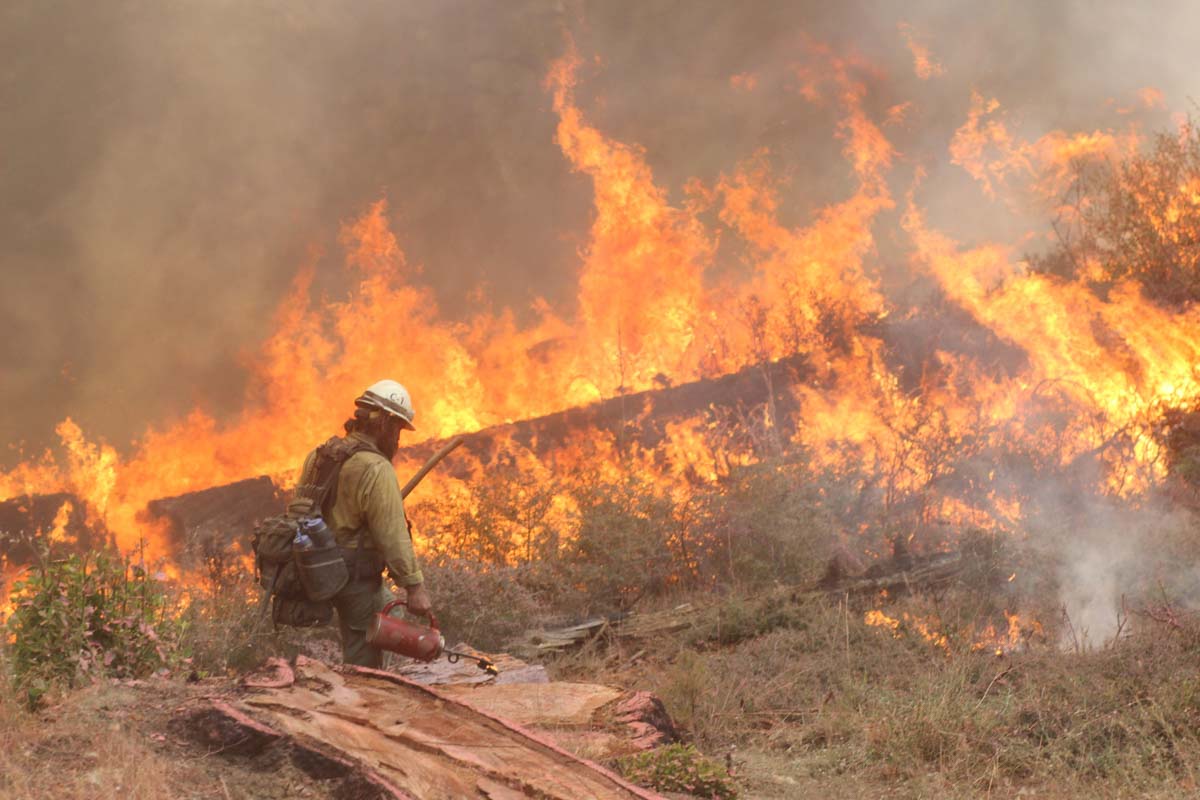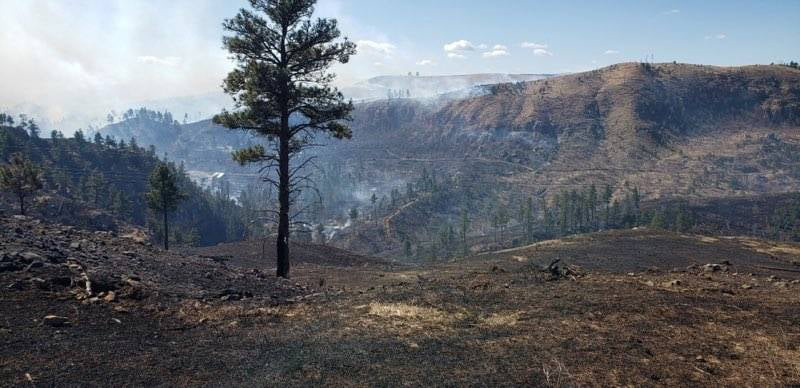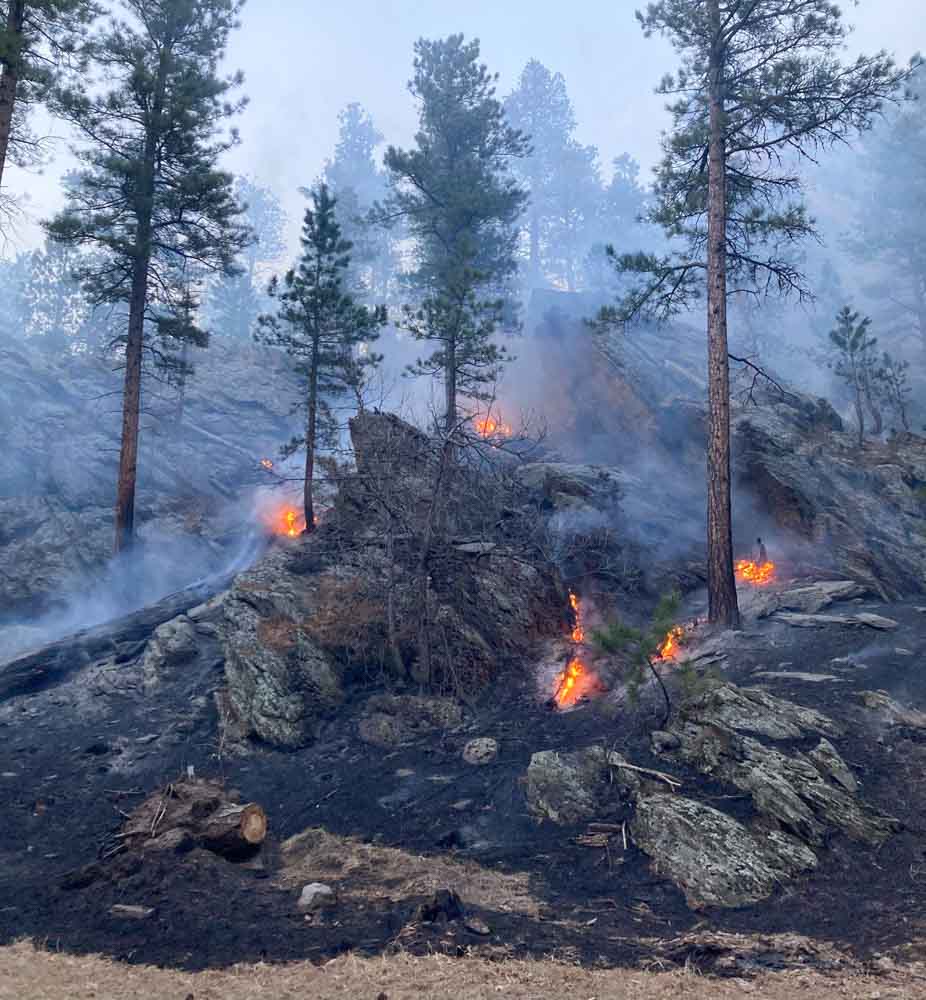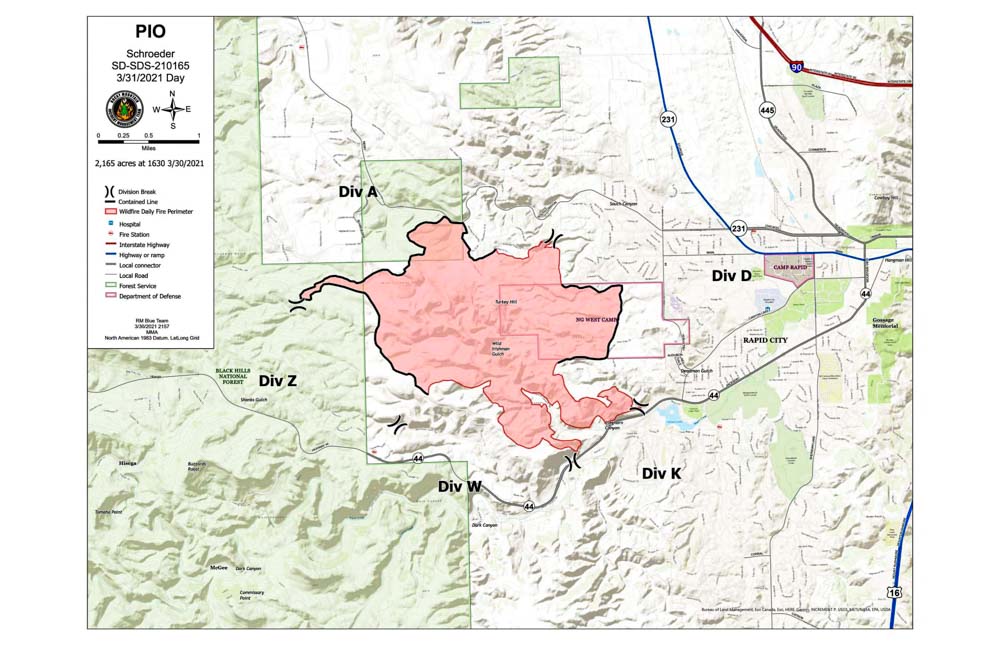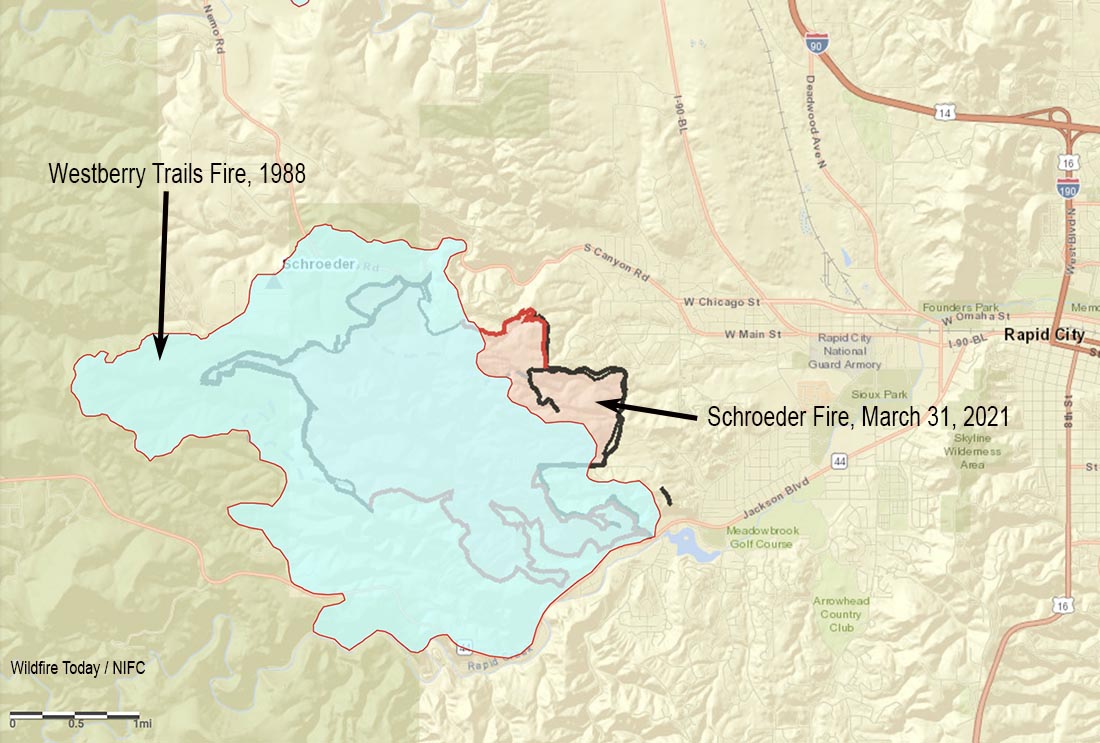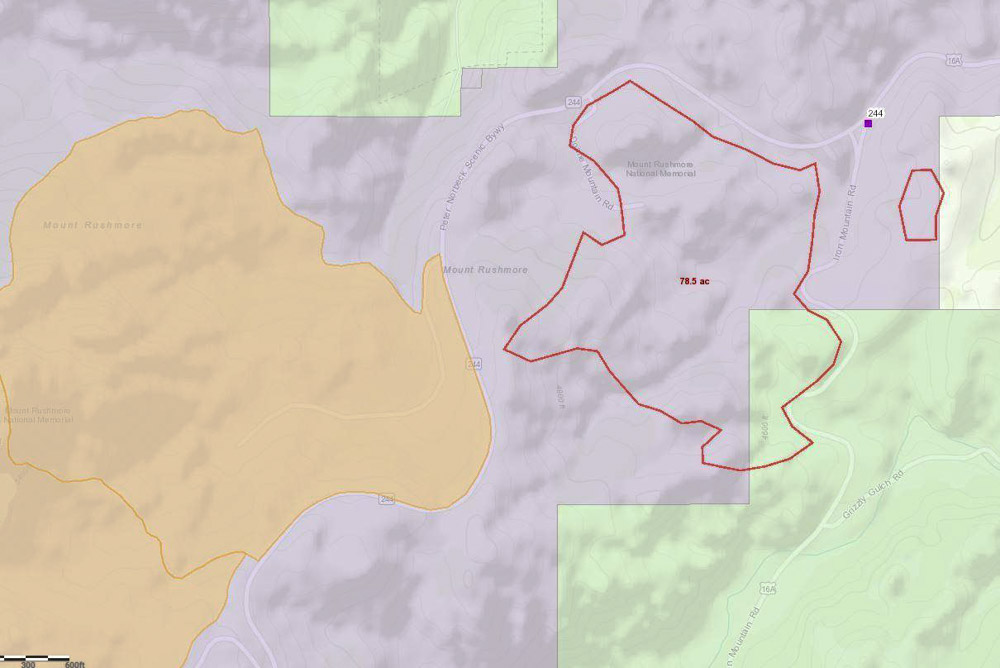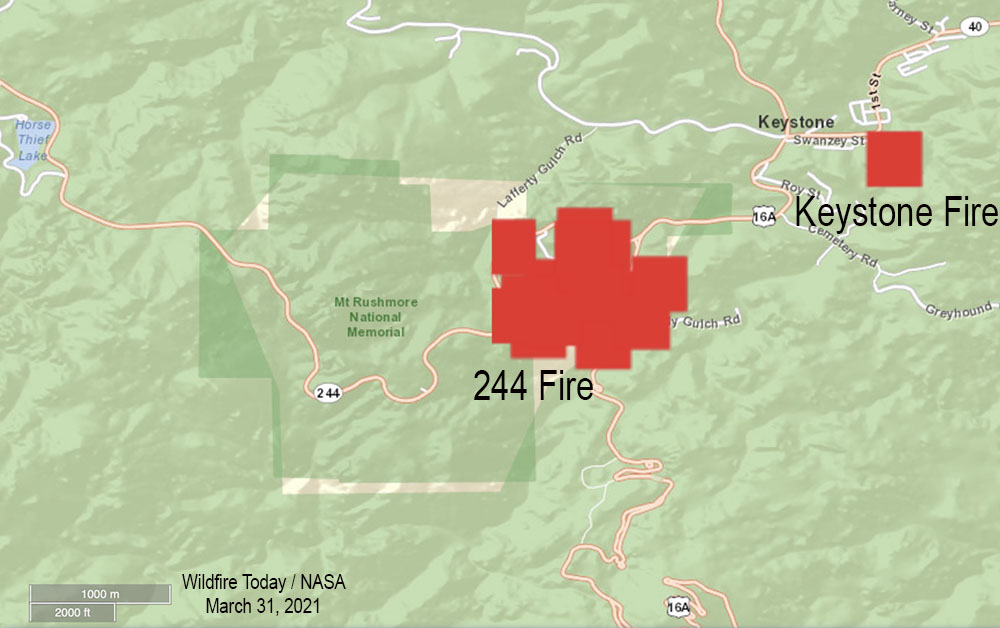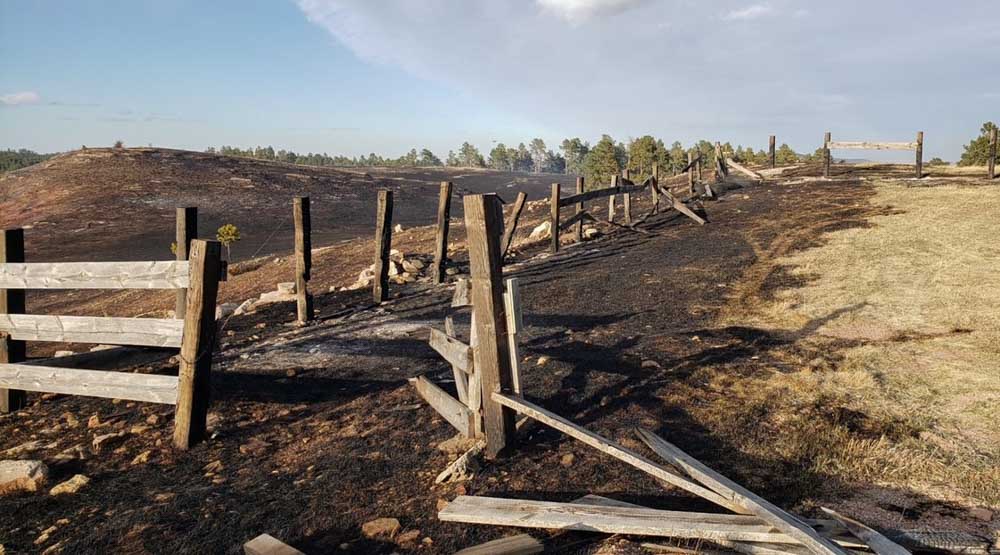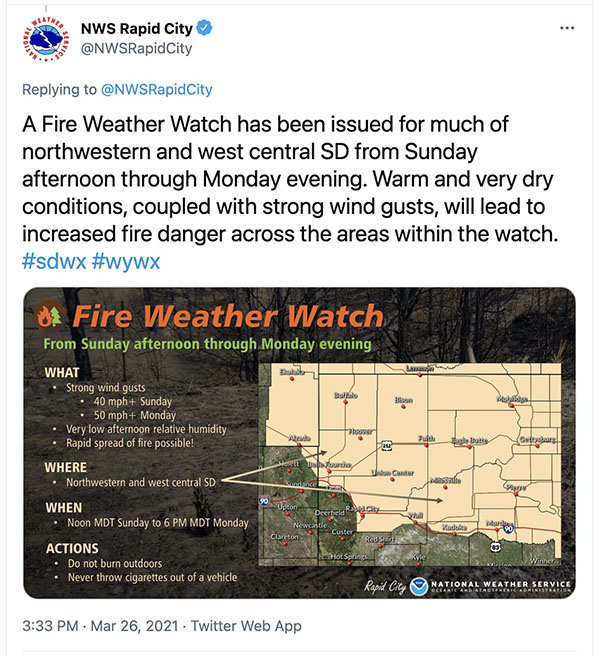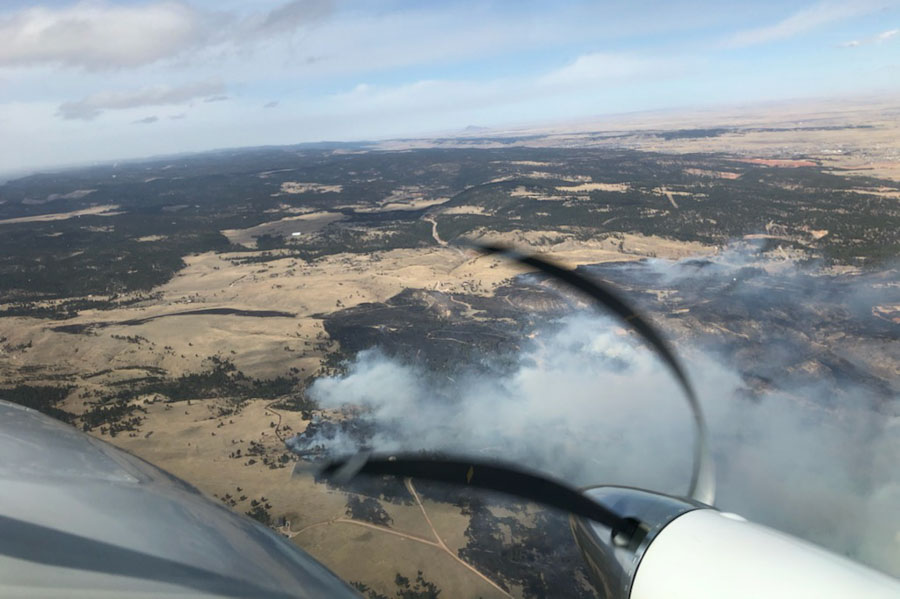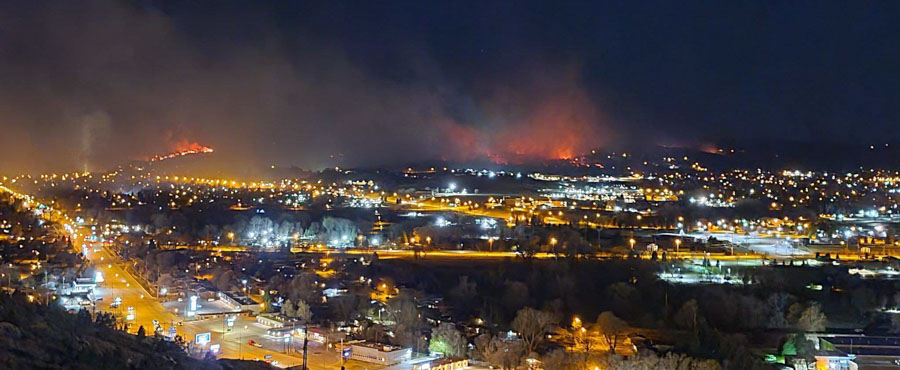
The forecasts for wildland fire potential issued April 1 predict wildfire potential will be higher than normal in Florida, the Southern Plains, and the Southwest through June, 2021. High potential is also expected during April in North Dakota and portions of the state’s neighbors, Montana, South Dakota, and Minnesota.
According to the Drought Monitor issued on March 23 all of the 11 western states have areas with severe drought, and all of them except Washington have areas of extreme drought. Very large sections of exceptional drought, the highest category, are in Nevada, Utah, Colorado, Texas, New Mexico, and Arizona.
The data from NIFC shown here represents the cumulative forecasts of the ten Geographic Area Predictive Services Units and the National Predictive Services Unit.
Below:
- An excerpt from the NIFC narrative report for the next several months;
- More of NIFC’s monthly graphical outlooks;
- NOAA’s three-month temperature and precipitation forecasts;
- Drought Monitor;
- Keetch-Byram Drought Index.
“Climate outlooks indicate warmer and drier than normal conditions are likely for much of the Plains and Intermountain West through spring into early summer continuing and exacerbating drought there. A Fuels and Fire Behavior Advisory is in effect for northwest Minnesota for the potential of rapid rates of spread due to high fuel loading and fire carrying in all fuel types, including peat. Active fire seasons are anticipated for much of the Plains, especially the northern and southern Plains, and for the Southwest this spring.
“Above normal significant fire potential is expected across the northern Plains into northern Minnesota through April into early May. Depending on weather spring precipitation, this may extend farther into May before green-up. Additionally, much of the southern Plains is forecast to have above normal significant fire potential through May before green-up. Recent and continuing dry weather in Florida is likely to contribute to above normal significant fire potential through May with conditions returning to normal by late June.
“The Southwest is forecast to have above normal significant fire potential during most of April through June before the Southwest Monsoon arrives in July. Above normal significant fire potential will expand northward into the Great Basin and Rocky Mountain Geographic Areas May through July. Additionally, central Oregon and central and southeast Washington are likely to have above normal significant fire potential beginning in June with portions of the Coast Ranges, Sierra, and Cascades in California increasing to above normally by July.”

Continue reading “All 11 western states except Washington have areas with severe drought”







